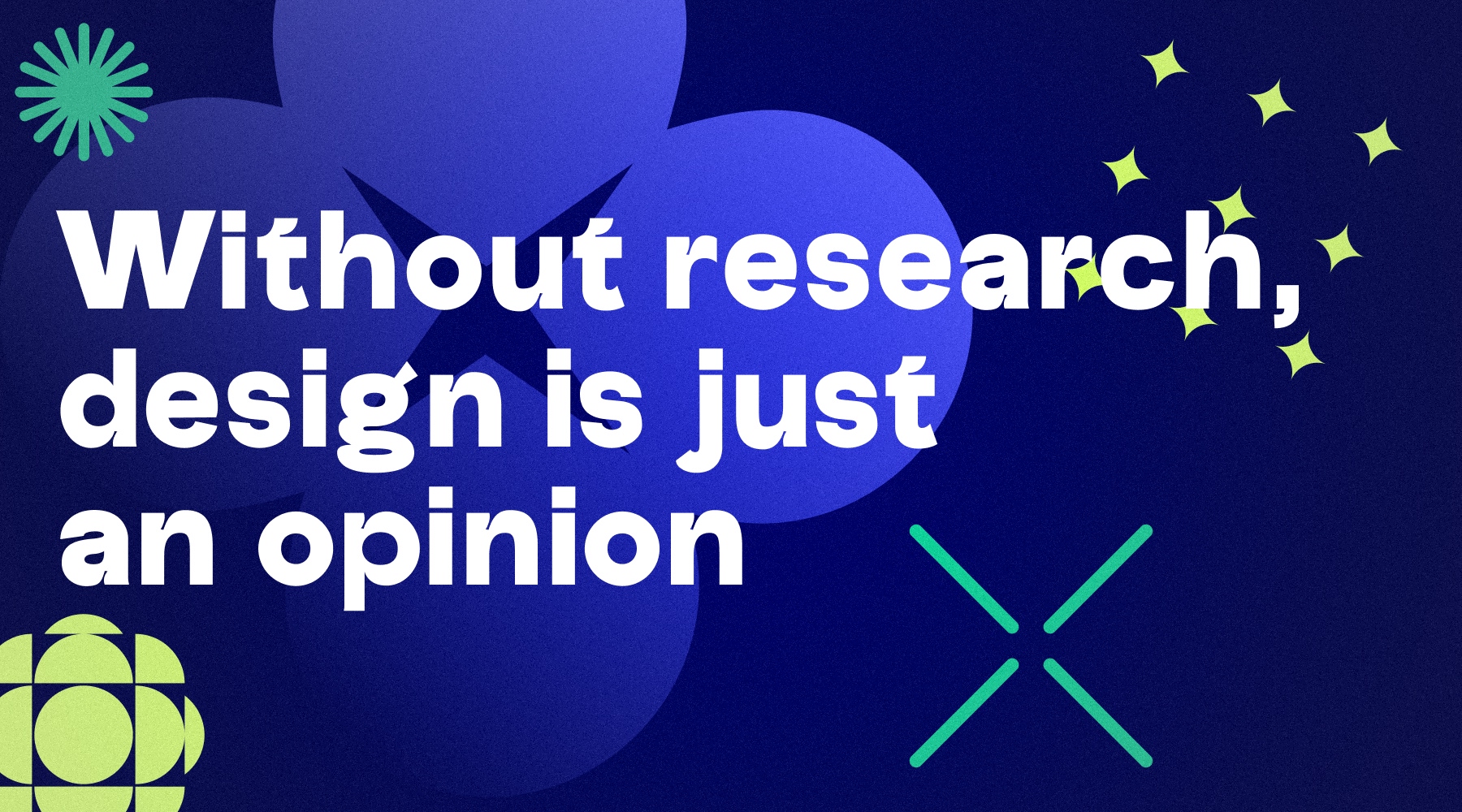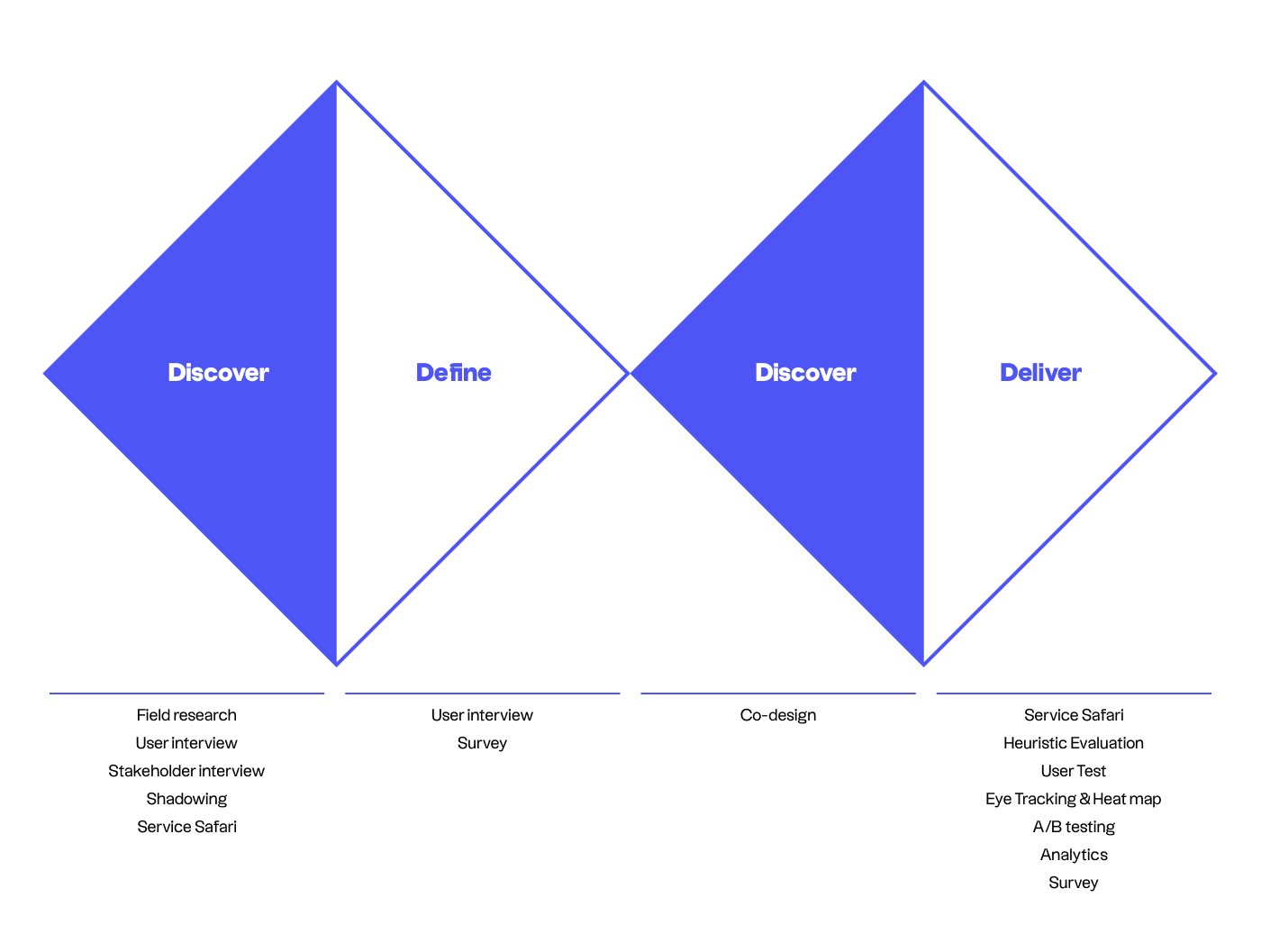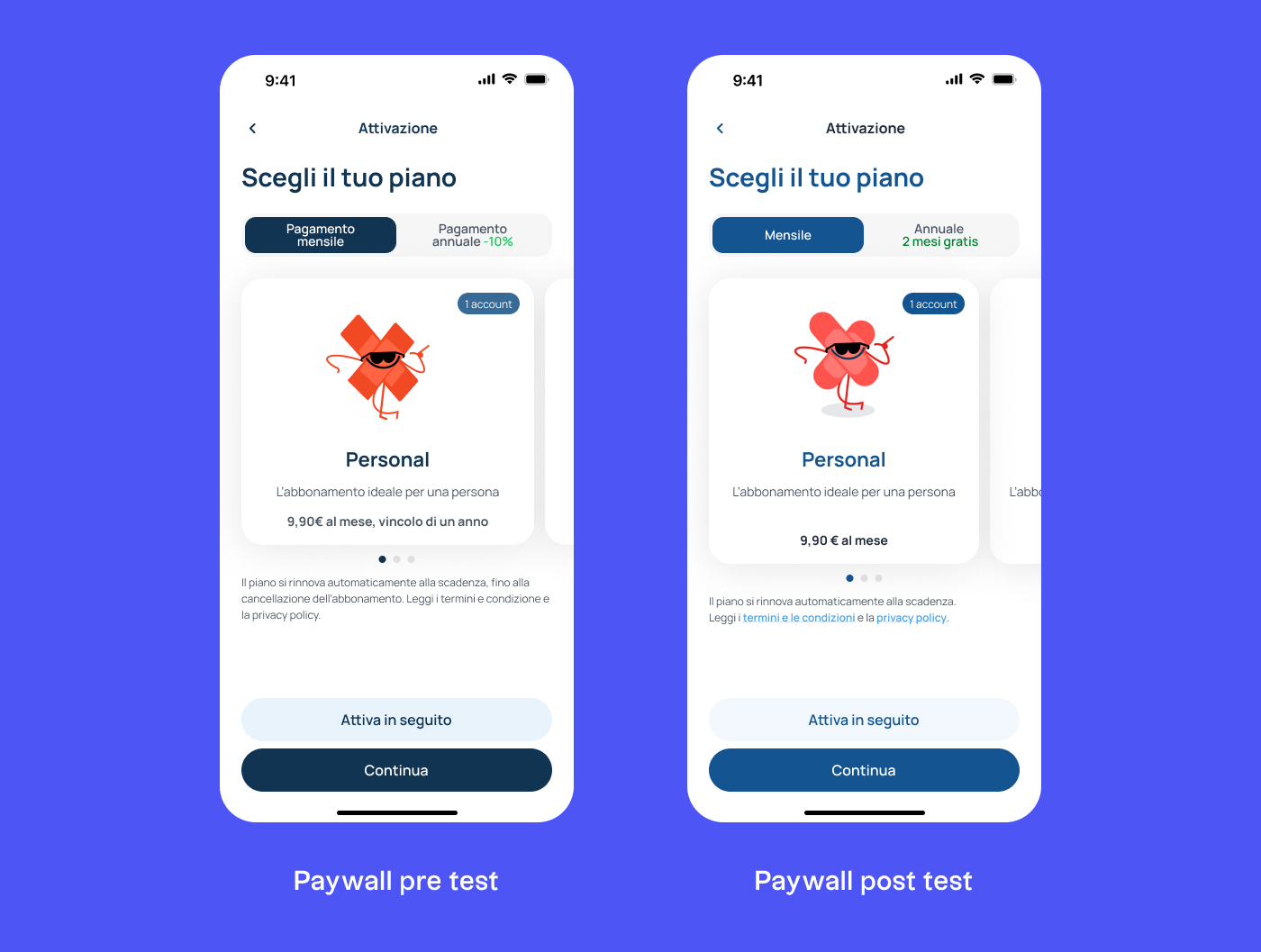Today, in the digital age, we interact with products and services through a complex network of channels, points of contact and actors. This makes decision-making processes increasingly articulated, fluid and, consequently, difficult to predict. Further complicating the picture, is the fact that people are not static entities: habits and needs change constantly based on age, social changes and technological advances.
In the world of design, as well as in marketing, it is now clear that in order to design successful products, services, apps and software, we must know our users and customers thoroughly. Who are they? In what context do they live? What problems do they face, what needs do they have and what behaviors do they implement? Only by finding an answer to these questions can we respond to their needs, resolve critical issues and create valuable experiences.
Understanding human behavior is really complex, people often act irrationally. But this should not discourage, but rather stimulate customers to deepen their contexts, mental models and objectives — conscious and unconscious —. Therefore, this article was created to reaffirm the importance of User Research by recounting our direct experience and some episodes of professional life that actually happened.

Too often, when we propose to companies to predict research activities with users within the different design phases, we get the following answers:
There is no budget/time to do research.
The specifications have already been defined by the Marketing/R&D department and we cannot question them.
Yet as soon as we ask based on what data the specifications have been defined, the answers are vague or absent and we discover that the project was set up based on the instinct or sensitivity of some internal figure.
Another common comment is:
We already know our customers: we have the info and requests that come to us from the sales network
In many companies, salespeople and the sales network are the only source of truth about customers. But their point of view is inevitably biased: not being researchers, they tend — even in good faith — to interpret customer needs through the filter of their experiences and objectives. As a result, their operational needs often end up overriding those of the users.
An event that actually happened:
In the past, we worked for a stove company that had patented a system for running both pellet and wood stoves. The advantages compared to traditional pellet stoves were significant, but sales were not taking off. Only thanks to a series of interviews, we discovered the reason: retailers preferred to push traditional pellet stoves because they were easier to 'tell' to customers. Hybrid pellet-wood stoves required a greater effort of explanation to list all the advantages and news of the product. In conclusion, the sales network prioritized simplicity, ease and speed in selling, putting the real needs of end users in the background and thus hindering the success of the product itself.
Let's also add that, if understanding users is difficult, it is no less difficult to understand the state of the market, which changes more and more rapidly: at any moment a new player can arrive that redefines the rules of the game.
Doing research, in the different phases of a project, brings several advantages:
When it comes to User Research, we can distinguish two macro-categories of research: Exploratory vs Evaluative and Qualitative vs Quantitative. Here they are in detail.
La exploratory research it serves to better understand the context without the formulation of a priori assumptions. It helps answer questions like 'Why' certain things happen and 'How' they happen. It's a great way to explore different contexts, industries, cultures, and target groups.
La evaluative research aims to validate assumptions or design assumptions, such as a customer journey map or a concept in the form of a wireframe or prototype. It is a great way to question what has been designed or what is already on the market.
La qualitative research collects subjective information on small samples of users. With this methodology, it is possible to dig deep to detect people's hidden needs, desires and motivations.
La quantitative research collects a lot of objective information in a short time. The results reveal clusters of preference with respect to the proposed theme.
There are different qualitative research methods and techniques, but the main ones are the following:
Expert evaluation by the design team of an interface/solution based on compliance with the usability heuristics formulated by Jakob Nielsen. Often these principles are adapted to the reference context to define the actual evaluation criteria.
Observation of user behavior in the context from an external point of view. This allows the design team to maintain a certain distance useful for interpreting the observed behavior in real-time and, if desired, to be able to conduct experiments on site.
Direct immersion of the design team in living a particular experience/service through the interaction of all the touchpoints present. This method allows the team to identify key issues in the current experience. It is often useful to involve representatives of the customer/client.
1:1 interview with a user, during which we try to obtain information about the person, their past and present experience and any desired for the future. The interview can be structured, semi-structured or unstructured.
Supporting a user/operator during the execution of a task in which that person is an expert. This method makes it possible to obtain the specific know-how of the person, to acquire the technical jargon used and to have direct experience of their experience regarding the use of a product/service.
Activity that allows us to collect from users their habits, memories and opinions regarding a more or less specific topic. Participants usually have a period of time to fill out booklets or cards that they then return to the design team. The information collected is useful as inspiration, to be able to better immerse yourself in the reality experienced by the users themselves.
Exercise in which a user groups and orders a series of concepts/elements provided by the design team. This activity is useful for understanding the user's mental model (for example how to search for a rental car online).
Group activity in which users are helped to create representations of their habits, opinions, or ideas. Generally, the outputs consist of collages, drawings, constructions with Legos that serve the design team as inspiration for the generation of concepts.
Method through which a prototype (or product) is submitted to a limited number of users who perform a series of actions, to obtain qualitative information regarding the goodness and usability of the designed solution. An indispensable part of user testing is the retrospective debrief in which the insights emerged from the test sessions are grouped together and improvement actions are identified.

A method for collecting information from a large number of users, usually in a quantitative manner. Useful when you have a large pool of users available or when users are not easily found for other qualitative research methods.
A research technique used to evaluate and compare two different versions of an element or process, in order to determine which of them performs best in terms of specific objectives.
Approach based on the analysis of data collected through web monitoring tools to obtain relevant insights and information on how users interact with a website, app or other digital resources.
This theoretical excursus into the world of research methods leads to only one answer: there is no better tool ever! The choice depends on what you are looking for, what you want to find and where the information resides. The key is to find the right mix of tools and use multiple techniques in different phases of the project, so as to cross data, reduce biases and obtain the most complete possible vision.

We did a bit of digging — we admit it — but it was essential to get to the crucial point: in every project we tackle, we ALWAYS include research activities, customized according to the characteristics and objectives of the project itself, because we are aware and convinced of the positive impact of these activities and the benefits they bring.
For Avant-Garde Medica we have designed a telemedicine app (see the complete project). Once the concept was defined and before moving on to the development phase, we focused on creating a complete prototype in Figma and we carried out 8 user tests with multiple types of users (off-site students, retirees, pharmacy owners, etc...).
The test objectives were 3:
The test sessions made it possible to validate the usability of the app and to verify a high level of interest on the part of all types of users, but It also detected a big problem with the business model: none of the users to whom we submitted the app would have actually purchased the service with the proposed plans. For what reason? The project management decided to set up a subscription-based service with an annual obligation, without a free trial.
The annual plan was defined by all the participants as too binding, so they would never have activated the plan. This meant that out of 8 potential customers, 8 would be lost. They said that instead they would have no problem activating a monthly plan, even if only to try the service.
Conclusion: research with users was essential to define the correct commercial proposal and avoid losing potential customers at the actual launch of the app.

The project for the Bellissima brand by Imetec was born in a controversial historical period, which prompted us to review the 'classic' way of doing interviews. It was 2020 and the difficulty of facing these tests in person stimulated our creativity to find valid alternatives, without compromising the goodness of the test itself.
The project concerned the creation of a hair dryer with an innovative character, with characteristics equal to those of a professional hair dryer. In this case, with the aim of also innovating research methods, we decided to go beyond the concept of user-test and to set up a path of continuous and iterative involvement of users within the design process.
We involved 12 end users and a team of expert hairdressers and stylists at all stages:
Conclusion: The contribution of users was fundamental to define the innovative nature of the product. Thanks to direct collaboration, it was possible to create a hair dryer equipped with a new handle concept and a rethought user interface, thus creating a completely renewed experience of using the product


The request of the Keter design team was not at all simple: to identify and design a possible new type of product to be placed between two existing product ranges — sorry but we can't go into more detail... we are rightly under NDA 😉
We started the project with a series of 8 interviews in which 12 people were involved. The interviews were carried out at the homes of the users so that, not only could we interview them, but also observe and analyze their living environment.

Gli Insight What emerged represented a collection of crude observations on the needs and desires of users, who indicated some opportunities for improvement of existing products and new solutions to be developed.
Subsequently, these data have been compared with previous research and integrated with an analysis of the current Keter product range. this triangulation process allowed us to validate the patterns and Define the basic keypoints for the development of the project.
Conclusion: the research laid the foundations and indicated the direction for the development of the first design concepts, which were created with 4 hands, in collaboration with the Keter design team.
User Research is not just a collection of data, but a real dialogue with users, a way to get out of the “design bubble” in which we designers, due to the nature of our work, are enclosed. Often, design teams and companies are trapped in established beliefs, habits, or prejudices that can hinder innovation. Research makes it possible to challenge these certainties, disassembling erroneous assumptions and revealing hidden opportunities.
In these years of study, work and teaching, we have learned that dedicating time and resources to understanding people does not only mean collecting data: it means, above all, opening a communication channel that enriches, inspires and guides towards more informed and informed decisions.
Through research, a more empathetic and inclusive approach is developed, capable of capturing nuances that would otherwise remain invisible. This continuous dialogue between designers, companies and users improves results and makes it possible to adapt to changes in the market and society proactively.
In a world in constant evolution, where innovation is a necessity, User Research is the bridge that connects our ideas to the real needs of people. It's not an additional cost, but an essential investment to create experiences that really matter. Word from Rawr.